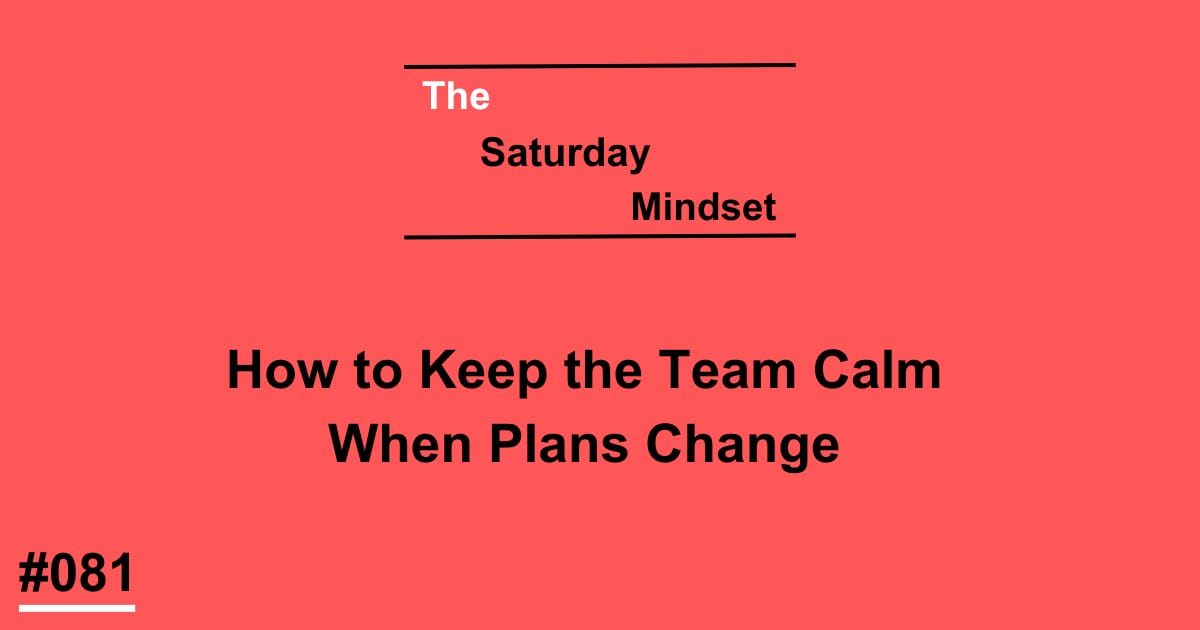- The Saturday Mindset
- Posts
- How to Keep the Team Calm When Plans Change
How to Keep the Team Calm When Plans Change
Read time - 2 minutes

This week reminded me that the toughest challenges in a project rarely come from the technical side. Schedules, budgets, and equipment can all be managed with structure and data. But people — their expectations, emotions, and communication styles — require leadership, not spreadsheets.
We spend a lot of time refining timelines and risk registers, but even the best plan can unravel if the team isn’t aligned or motivated. That’s why managing people isn’t a soft skill — it’s the foundation of delivery.
Table of Contents
Listen before deciding
When tensions rise or tasks slip, the instinct is to act quickly. But taking a moment to understand what’s really causing resistance — workload, unclear scope, or lack of support — often leads to smarter decisions.
Balance accountability with empathy
You can hold people responsible without being rigid. When you understand their constraints, it becomes easier to find solutions that keep the project moving and the team engaged.
Make communication purposeful
Instead of more meetings, aim for meaningful ones. A five-minute check-in that clarifies priorities can prevent days of confusion later. Clear communication is the simplest form of risk management.
Recognise effort, not just results
When the schedule is tight, small wins matter. Acknowledging progress keeps morale up and reminds everyone that their work adds real value.
By the end of the week, I noticed that once the team felt heard and supported, collaboration improved almost immediately. The plan didn’t change much — but the energy behind it did.
And that shift made all the difference.
Action Step
Next week, pay closer attention to the human side of your project. Ask one team member how things are really going. You might uncover a small issue before it becomes a big one.
P.S. If you’d like to explore practical tools for your own projects, I’ve shared a few free templates here: vandersonbaril.com/free-template